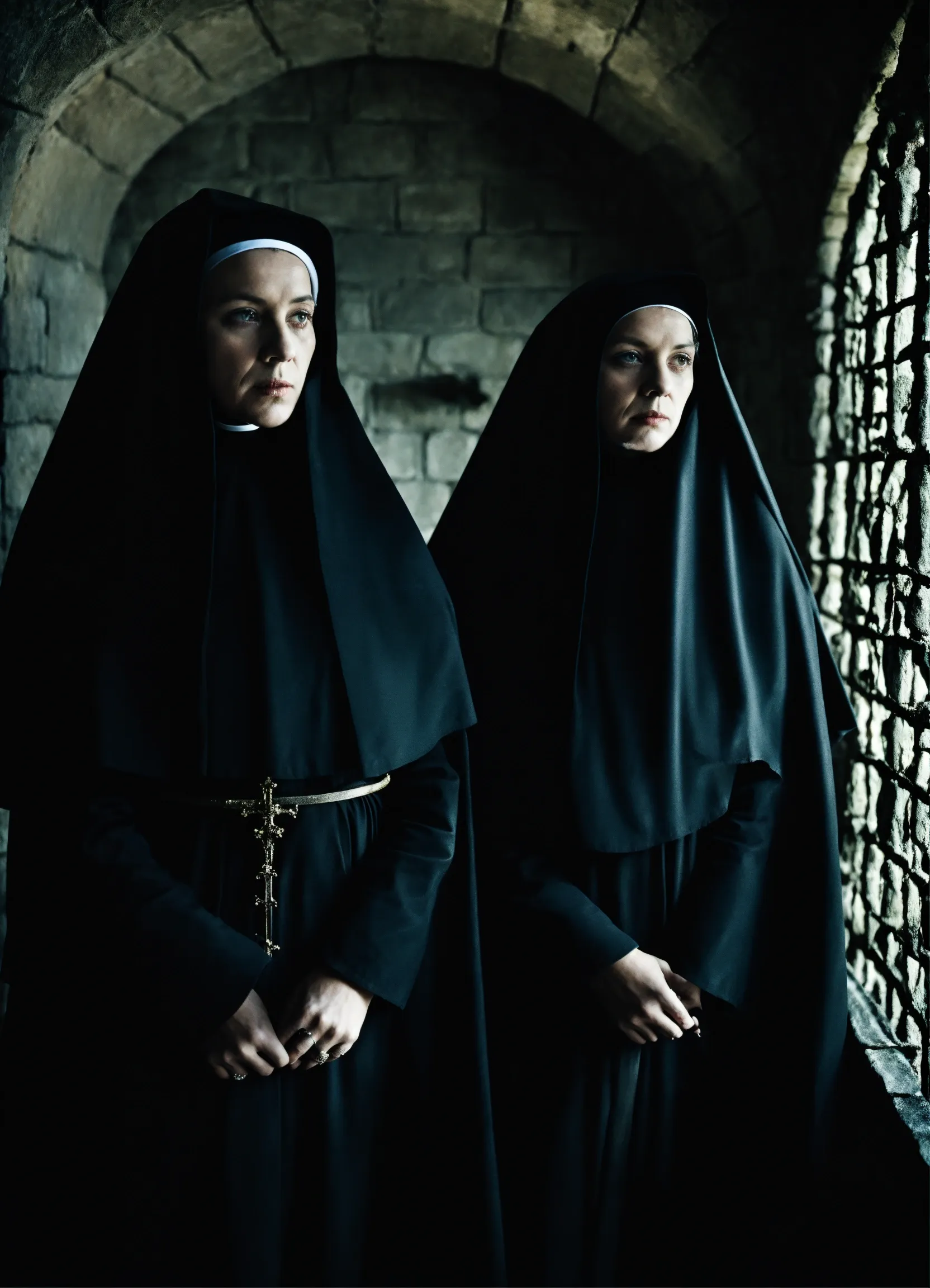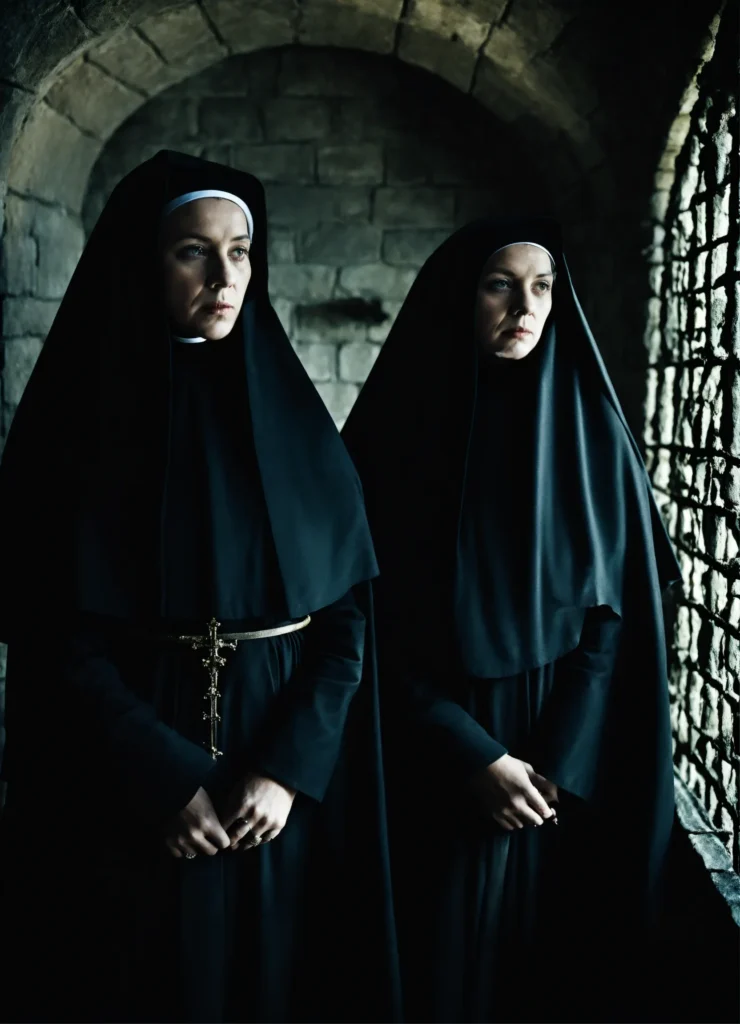
Sister Agnes, a woman whose face resembled a crumpled parchment illuminated by the flickering candlelight of devoutness, adjusted her wimple. It was a perpetual battle against gravity and the creeping tendrils of modernity. Tonight, modernity was winning. In her trembling hands, a sleek iPad Pro glowed, displaying the Canva interface.
The Convent of Perpetual Design, as it was ironically known, was not your typical sanctuary of silent contemplation. It was a hub of surprisingly fervent graphic design, fueled by the sisters’ need to create visually appealing pamphlets for the annual bake sale. Sister Agnes, the self-proclaimed Canva evangelist, had converted the entire order, much to the chagrin of the elder nuns who still clung to the art of calligraphy and hand-drawn illustrations of surprisingly grotesque saints.
The problem wasn’t the Canva, it was the internet. The convent’s ancient wiring groaned under the weight of streaming tutorials and stock photo downloads. The Wi-Fi, affectionately dubbed the “Holy Ghost,” was temperamental at best, prone to sudden disappearances and inexplicable surges of demonic static.
Tonight, the Holy Ghost was particularly restless. The screen flickered violently, distorting the carefully chosen font for “Sister Mary Magdalene’s Miracle Muffins.” A cold draft snaked through the room, despite the perpetually locked windows. Sister Agnes shivered, blaming it on the late hour and the lingering scent of incense.
Then, she saw her.
A girl, no older than ten, stood shimmering in the corner of the room. Her eyes were wide, pools of melancholic blue, and her hair, the color of spun moonlight, floated around her face like a halo of sorrow. She wore a tattered white dress, stained with what looked suspiciously like blackberry jam, and her bare feet were translucent, hovering just above the cold stone floor.
Sister Agnes, despite her years of service and unwavering faith, nearly dropped her iPad. She’d seen things in the convent before, odd shadows, fleeting whispers, the occasional misplaced hymn book. But never anything like this.
“Are… are you lost, child?” she stammered, her voice cracking like ancient parchment.
The girl didn’t speak. She simply pointed a spectral finger at the iPad, her eyes fixated on the Canva logo.
“You… you want to learn Canva?” Sister Agnes asked, incredulous.
The girl nodded, her moonlit hair swaying gently.
And so began the strangest graphic design lesson in the history of the Catholic Church.
The ghost girl, who eventually identified herself as Lily, was a surprisingly apt student. She grasped the concepts of layers, typography, and color palettes with an unnerving speed. Her designs, however, were… unsettling. Images of wilting flowers, decaying fruit, and shadowy figures lurking in darkened hallways filled the screen.
“Perhaps something a little more… cheerful, Lily?” Sister Agnes suggested, trying to maintain a semblance of normalcy. “The bake sale is meant to be a joyous occasion.”
Lily tilted her head, her blue eyes filled with an ancient sadness. She then proceeded to create a design featuring a smiling nun offering a plate of cookies to a skeletal figure. The cookies, upon closer inspection, were filled with writhing worms.
Sister Agnes decided to focus on the technical aspects of Canva, hoping to steer Lily away from her macabre tendencies. She taught her about gradients, shadow effects, and the proper use of stock photos. Lily absorbed it all, her ghostly fingers gliding effortlessly across the screen.
As the days turned into weeks, Lily’s presence became a fixture in the convent. The other nuns, initially terrified, grew accustomed to her. Sister Bernadette, known for her surprisingly edgy sense of humor, even started commissioning Lily to design her prayer cards. The results were, predictably, bizarre. One card featured a depiction of the Virgin Mary riding a unicorn through a field of skulls.
But something else was happening. The Holy Ghost, once a source of constant frustration, now hummed with unprecedented power. The internet connection was lightning fast, the downloads instantaneous. The convent’s website, once a digital wasteland, blossomed into a vibrant online presence, attracting visitors from all corners of the globe.
The bake sale pamphlets, designed by Lily, were a sensation. Despite their unsettling imagery, they were undeniably eye-catching. People flocked to the convent, drawn by the promise of “Miracle Muffins” and the allure of the supernatural.
The convent was thriving, all thanks to a ghost girl with a passion for Canva.
But the success came at a price. Lily was growing stronger, her presence more tangible. The cold drafts intensified, the shadows deepened, and the whispers grew louder. Strange symbols began appearing on the walls, etched in a substance that resembled dried blackberry jam.
Sister Agnes realized that Lily’s connection to Canva was not merely a hobby. It was a conduit, a way for her to manifest her sorrow, her anger, her… hunger. The designs were not just unsettling; they were a reflection of her tormented soul, a glimpse into a world of eternal darkness.
One night, as Sister Agnes was reviewing Lily’s latest design – a disturbingly realistic depiction of the convent engulfed in flames – she felt a cold hand on her shoulder.
“Lily,” she said, her voice trembling, “what is happening?”
Lily didn’t answer. She simply pointed at the screen, her blue eyes burning with an unholy light. The image of the burning convent shimmered, then bled off the screen, filling the room with a suffocating heat.
Sister Agnes looked around in horror. The walls were melting, the furniture dissolving into puddles of viscous black goo. The other nuns were screaming, their faces contorted in terror.
Lily was feeding on their fear, their despair, their faith. The Canva was not just a tool; it was a key, a gateway to a realm of unimaginable horror.
Sister Agnes knew what she had to do. She had to sever Lily’s connection to the Canva, to the internet, to the world.
With a strength she didn’t know she possessed, she grabbed the iPad and hurled it against the stone wall. The screen shattered, the circuits sparked, and the Holy Ghost let out a final, agonizing shriek.
The room plunged into darkness. The heat dissipated, the melting walls solidified, and the screams subsided.
Silence.
When Sister Agnes finally dared to open her eyes, Lily was gone. The convent was intact, though bearing the scars of the spectral invasion. The air was thick with the smell of ozone and burnt electronics.
The Holy Ghost was dead.
The Canva Convent was no more.
In the aftermath, the nuns returned to their old ways, to the art of calligraphy and hand-drawn illustrations of saints. They never spoke of Lily, the ghost girl with a passion for Canva.
But sometimes, late at night, when the wind howled through the ancient stones of the convent, Sister Agnes would hear a faint whisper, a ghostly echo of a design tutorial, and she would shudder, knowing that somewhere, in the vast digital wilderness, Lily was still out there, searching for a connection, a way to manifest her sorrow, one unsettling design at a time. And she knew, with a chilling certainty, that the internet was vast, and Canva was everywhere. And Lily, like a virus in the machine, would eventually find her way back in.
Source: Read MoreÂ



